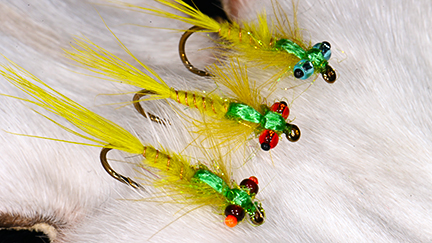Would you like to add a little bling to your mono filament eyes for damsels or caddis flies? Here’s an old trick to make very inexpensive eyes for large or small flies, using craft store variety plastic or glass beads. Besides making a good looking fly, the beads also give a bit of weight to fly.
The size of the eyes you make depends on the size of glass/plastic beads you are using. In this example, I will be concentrating on small flies. The process is the same for larger size eyes used in saltwater type flies.
The example below uses an 11/0 Black glass bead with 40 lb Amnesia monofilament. You can vary the bead color/ monofilament color to achieve a variety of effects.
The chart below is reference guide in choosing bead size. As to color, choose what attracts you and then experience will tell you what color attracts fish. At the end of the article, you will see the same fly with three different color beads and two different color lines.
| Bead Size | Size in mm | Hook Size |
| 11/0 | 2.2 | #8-#10 |
| 12/0 | 2.0 | #10-#16 |
| 15/0 | 1.5 | #14-#20 |
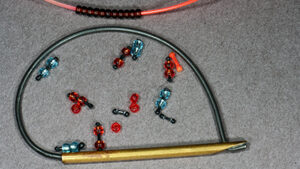
Step 1: Using a flame source like a Bic lighter, melt an end of a 6 – 12 inch piece of monofilament. Slide a glass bead onto the monofilament and ensure that the melted monofilament ball is large enough to ensure the glass bead does not fall off. The critical point here is to size the monofilament as compared to the size of opening in the bead. Pick a bead size that barely can be threaded onto the monofilament.
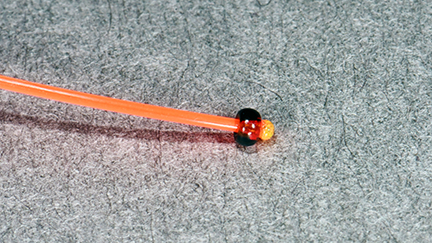
Step 2: Begin threading glass beads onto the monofilament. It is more efficient to place all the beads for several sets of eyes on the monofilament at one time. To be extra safe, on your first attempts, you may want to melt a stopper ball at the other end of the line. Please note, using black glass beads and a color monofilament creates eyes that are somewhat black but with an orange cast. If you wanted pure black, use black monofilament or a black bristle from a broom.
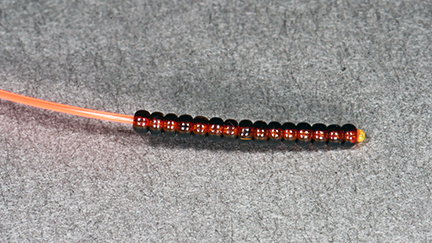
Step 3: Using a pair of forceps, clamp the monofilament two glass beads up from the melted ball and cut the monofilament with about 2 mm of exposed line. At this point, the forceps will prevent the glass beads from sliding off the monofilament. You need to create a melted monofilament ball on the monofilament with all the strung glass beads. Once this is completed, create a melted monofilament ball on the eyes you separated with the forceps. The space between the eyes is approximately 3 times the diameter of the hook. The spacing depends on the size of the hook and the type and amount of the material you are wrapping. You may need a couple of attempts to perfect the correct spacing.
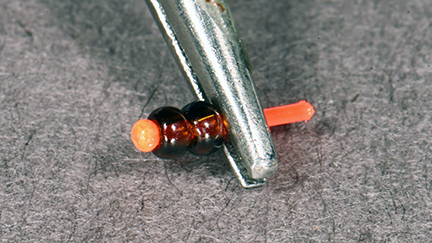
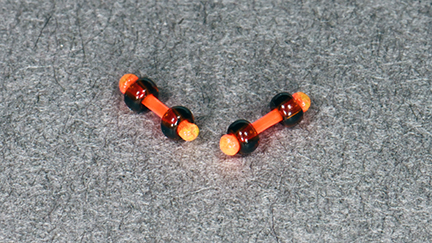
At this point the eyes are ready to be used. One possible enhancement is to use several coats of UV resin for a more finished look. Typically, I only use this enhancement for larger flies.
